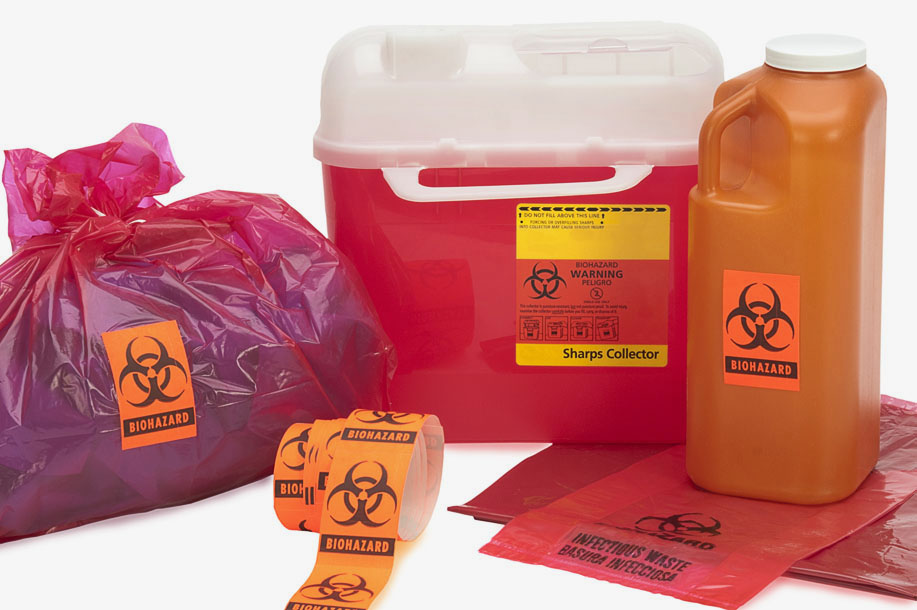What Are Red Medical Waste Disposal Bags Used For?

You know that red medical waste bags are specially made to contain medical or biohazardous waste. But what exactly should go in them and what should go in the trash? Use these bags to dispose of solid or liquid items contaminated with blood or other potentially infectious materials (OPIM). OPIM can be classified as:
- Human bodily fluids, including semen, vaginal secretions, cerebrospinal fluid, synovial fluid, pleural fluid, pericardial fluid, peritoneal fluid, amniotic fluid, saliva that contains blood (i.e., from a dental procedure), any bodily fluid that is visibly contaminated with blood, and all bodily fluids where it is difficult or impossible to differentiate between bodily flu.
- Any unfixed human tissue or organ from a human.
Still confused? Follow these simplified guidelines for using red bags.
Do:
- Dispose of biohazardous waste in red bags. Only biohazardous waste should be placed inside red bags for disposal.
- Dispose of items such as plastic vaginal speculums, used specimen swabs, used glucose test strips, urine dipsticks, blood-soaked drapes and gloves, and anything contaminated with OPIM in a red bag.
- Check the integrity of the red bag before lining it in the medical waste bin.
- Contain sharps in a closed and locked sharps container before placing them in a red bag.
- Segregate and label human pathological waste before putting in the bag.
- Make sure to seal the red bag after removing it from the waste disposal bin.
- Wear personal protective equipment (gloves, apron, face mask and eye protection) when handling, changing or transporting red bags.
What Not to Put in a Red Bag:
- Chemicals, such as formaldehyde, corrosives, alcohol, waste oils, solvents and developers
- Radioactive waste
- Materials that contain lead
- Pharmaceutical waste
- Hazardous waste, such as batteries, heavy metals and light bulbs
- Human remains, such as cadavers, complete torsos and fetal remains
- Compressed gas cylinders, inhalers or aerosol cans, even if the container is empty
- Chemotherapy waste
- Glass thermometers, sphygmomanometers and any medical device or solutions containing mercury
- Mercury-containing dental waste, such as non-contact and contact amalgam products, chairside traps, amalgam sludge or vacuum pump filters, extracted teeth with mercury fillings or empty amalgam capsules
- Uncontaminated solid waste such as food wrappers and beverage containers — place these items in a regular trash bag
- Empty intravenous bags and tubing, unless visible blood is present
And remember: Red medical waste bags must never be disposed of or collected by municipal or city waste collectors. Only licensed medical waste contractors are allowed to collect and dispose of filled red bags.